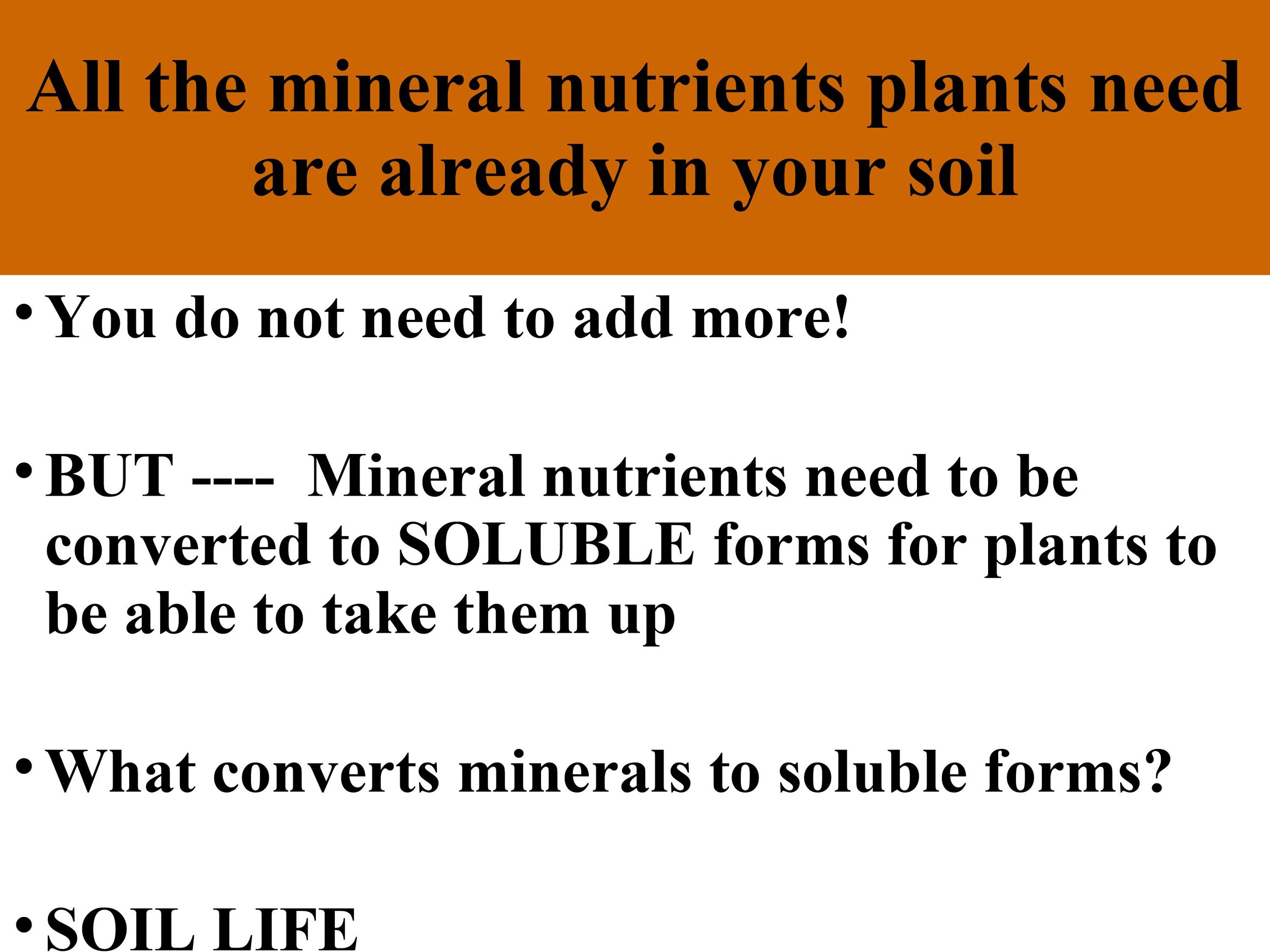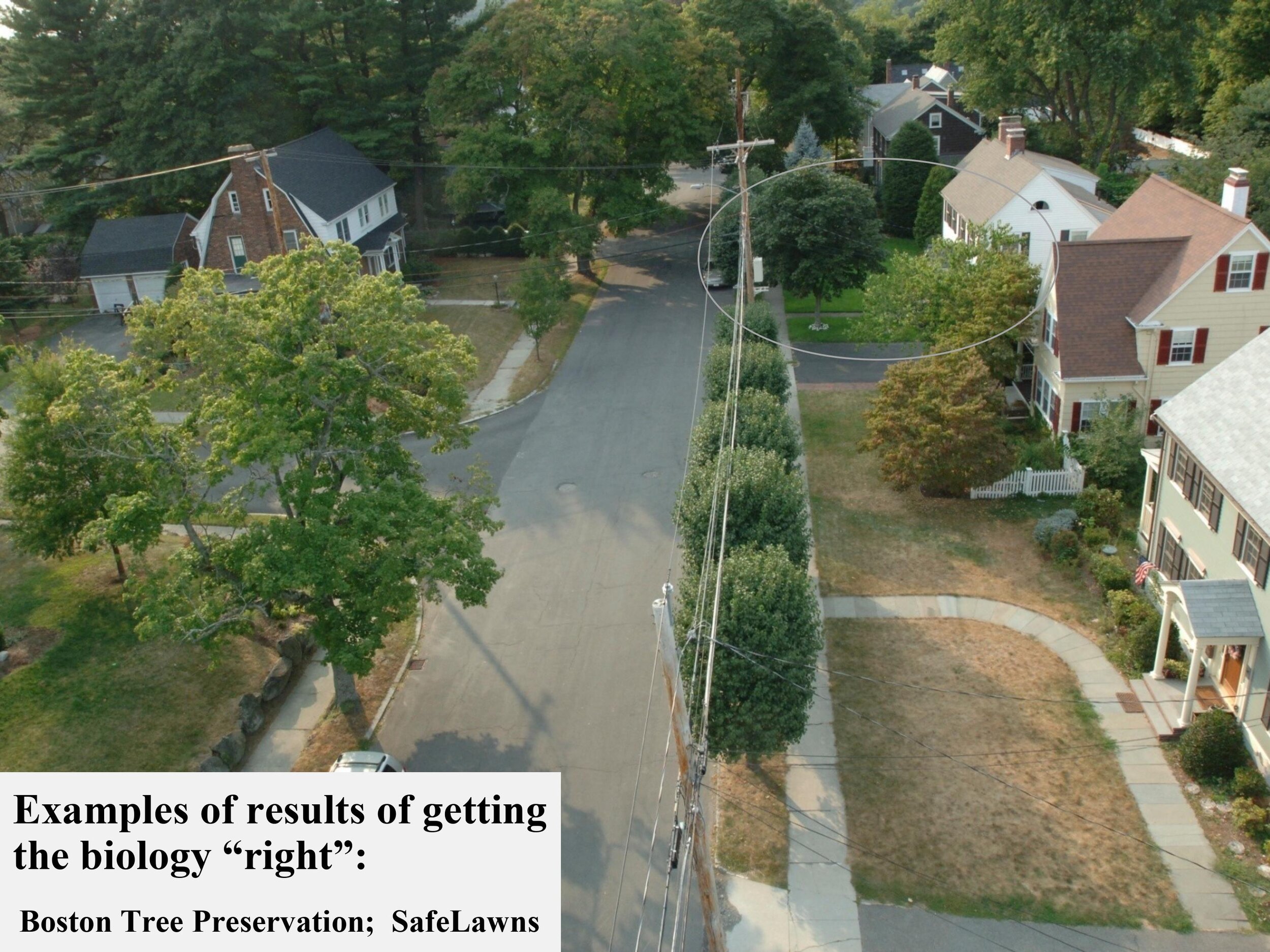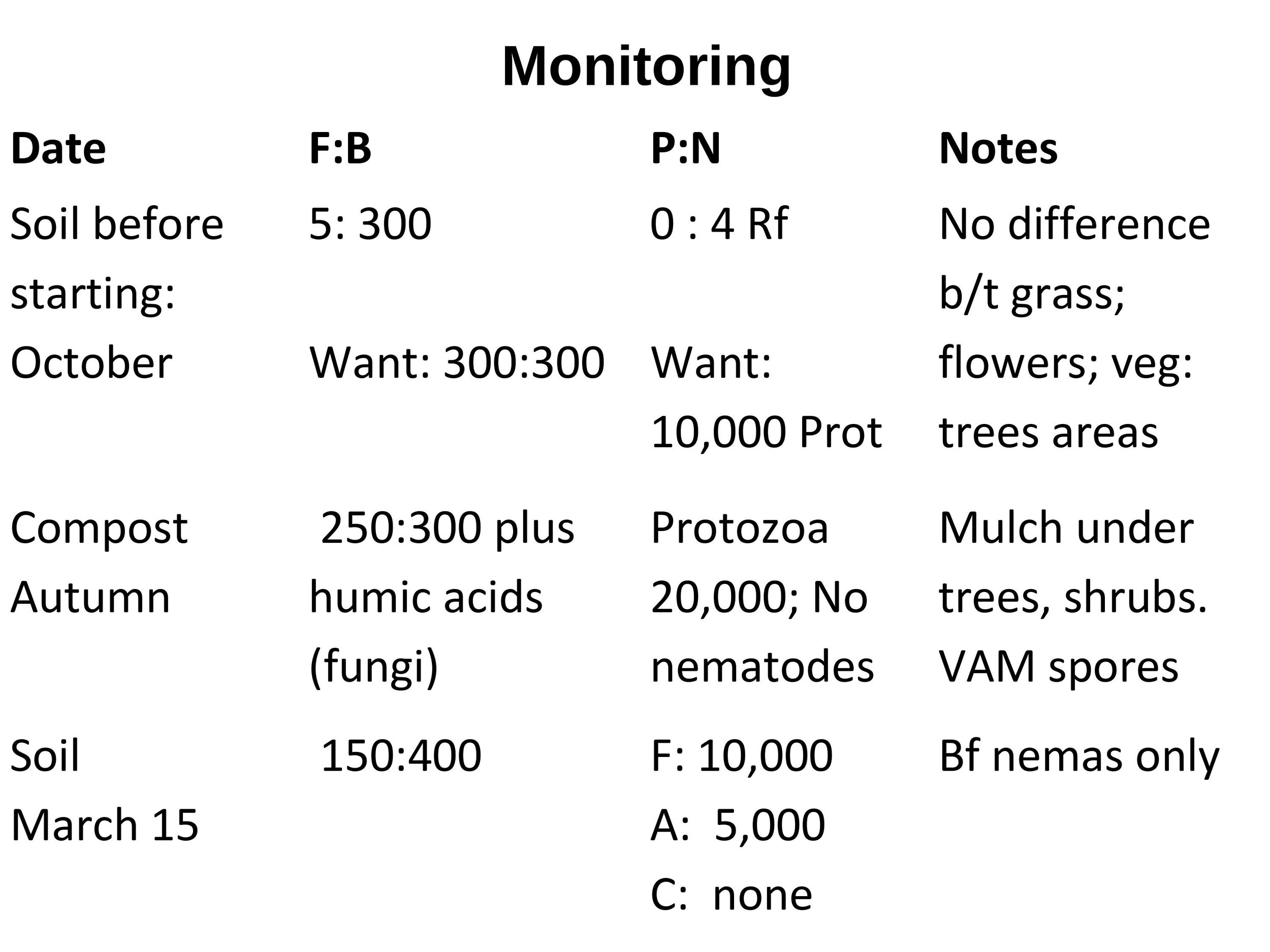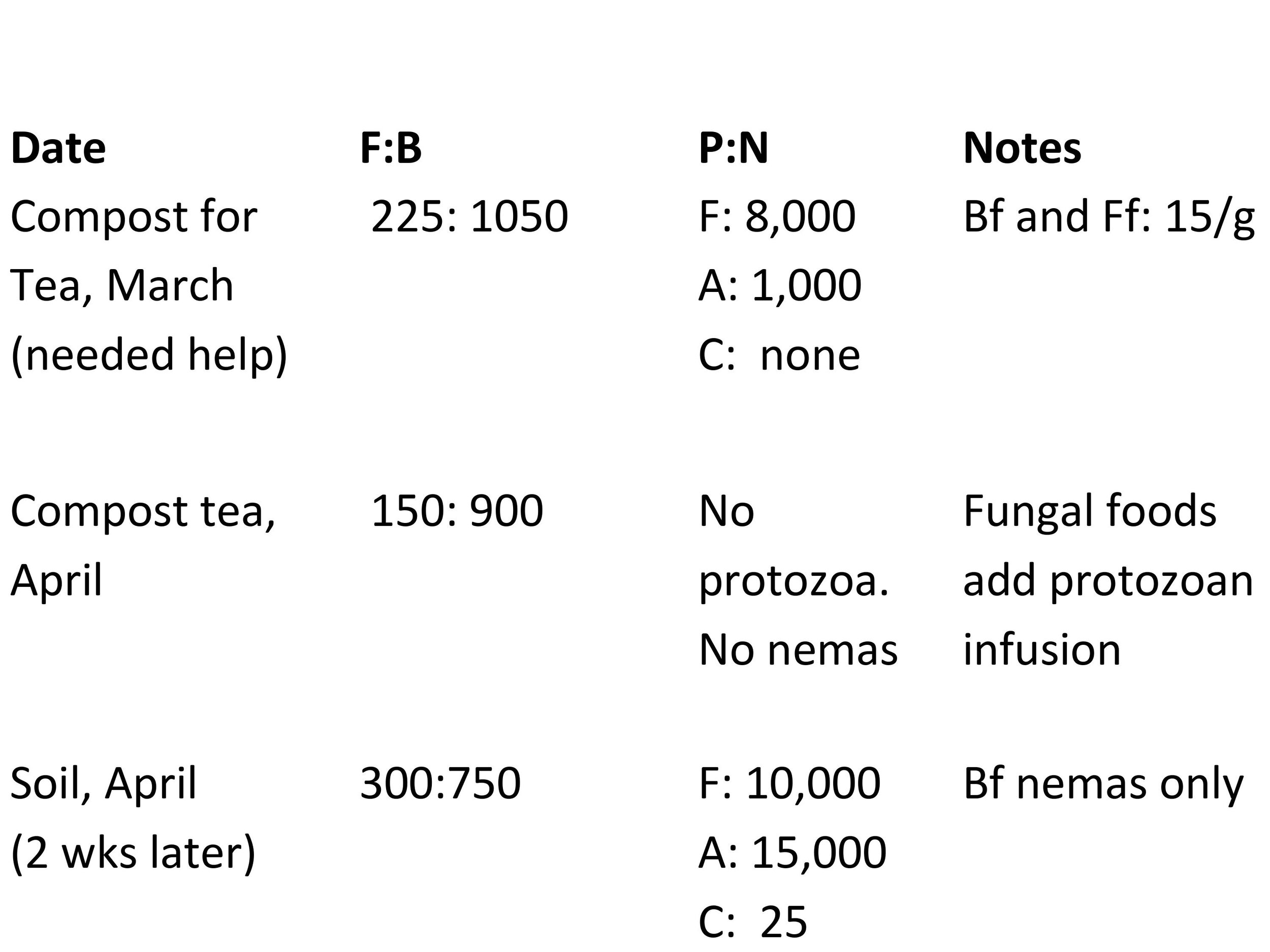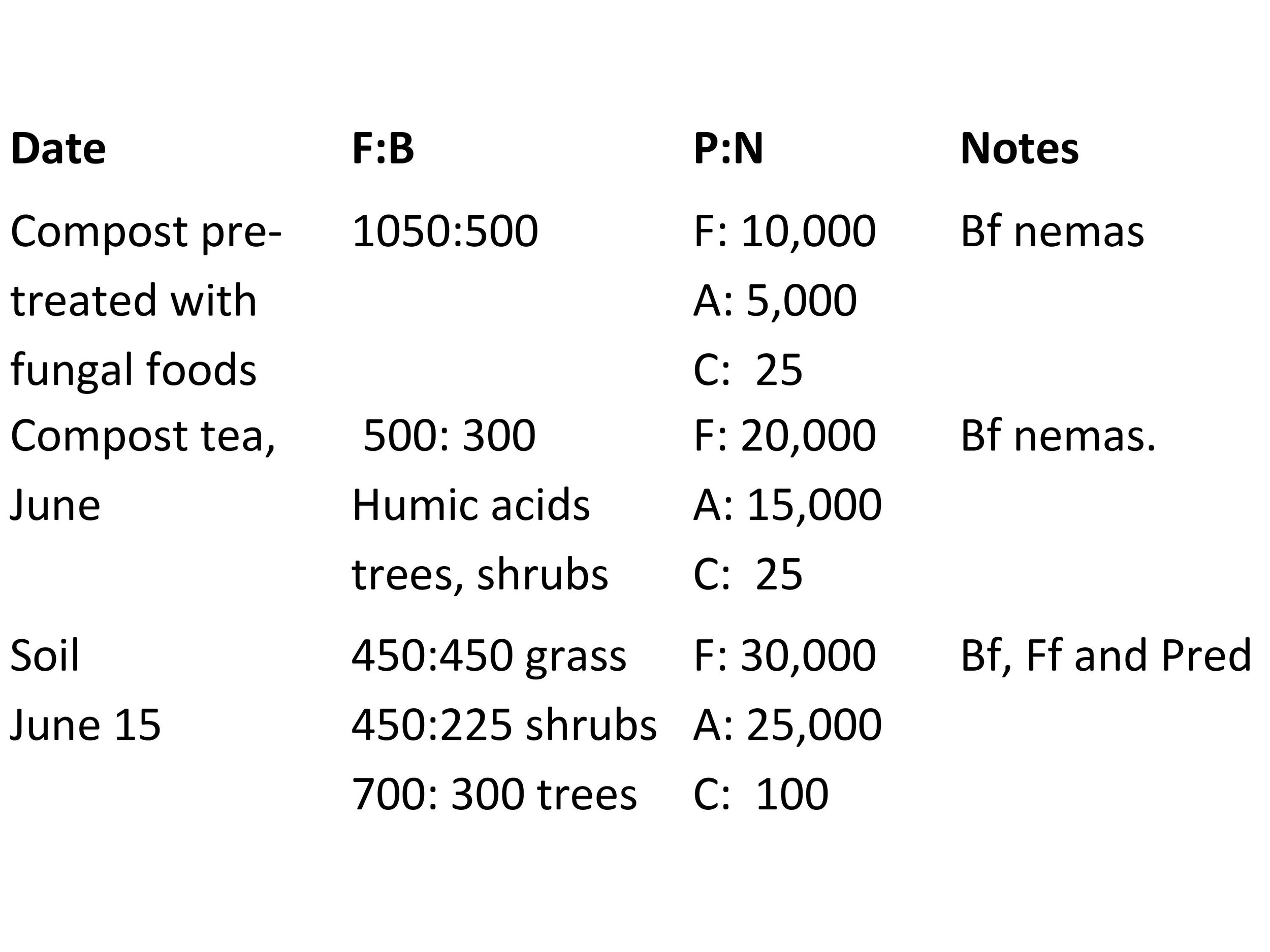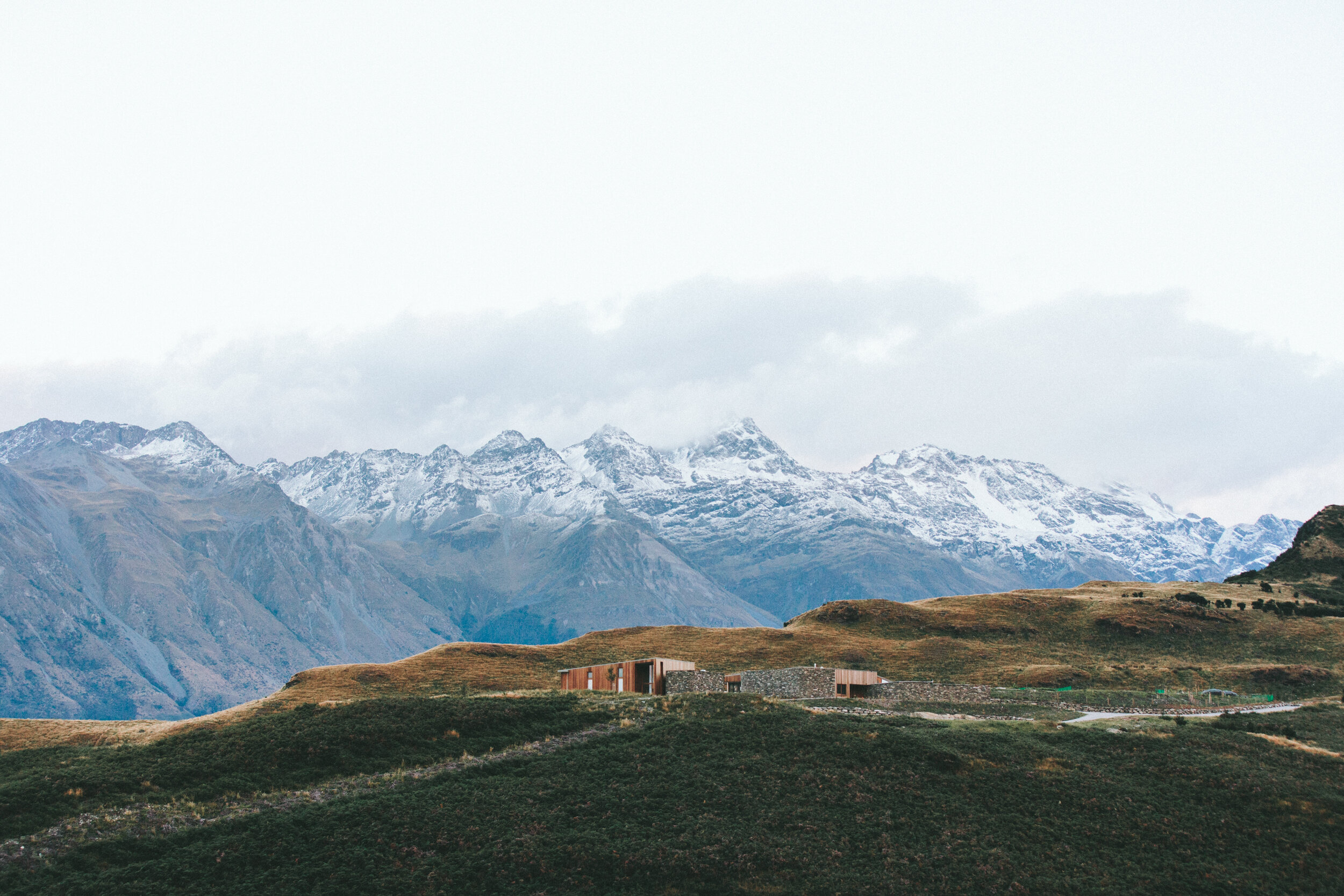Understanding the Soil Food Web
So, what is the difference between dirt and soil? Well, soil is more than just minerals and organic matter. It’s alive with millions of microorganisms and larger creatures; like earthworms, beetles and grubs.
All of those organisms – most of which are beneficial to the garden – require oxygen to live, which is one of the reasons truly healthy soil is light and fluffy. That porosity allows for plenty of oxygen molecules which sustain life.
The soil food web is made up of fungi and bacteria, which are preyed upon by protozoa, nematodes, micro-arthropods, and other larger organisms – and there are many species of each of these creatures. The population and ratio of microbes within your soil will be very different from the ratio in the soil of another gardener; because each of these organisms is, in large part, controlled by the plants being grown.
For example, soil with a significant weed problem contains a high ratio of bacteria. Grassland areas harbor a higher number of fungi under the surface. The soil in a healthy orchard contains ten times more fungi than bacteria, and the fungal ratio in conifer forests is higher still. The correlation between plant life and soil biology is striking.
Dirt, on the other hand, is sterile. It’s made up of minerals – clay, silt, sand – and, at best, a small amount of organic matter as well as disease pathogens and anaerobic bacteria.
Anaerobic bacteria don’t require oxygen. Maybe you’ve always thought that compacted soil is detrimental because it inhibits root growth? Actually, it’s the lack of oxygen which is the bigger issue. As soil becomes compacted, oxygen particles are squeezed out, killing the beneficial organisms of the soil food web which require oxygen for survival. These changes degrade soil into sterile dirt.
All of this is important because soil microorganisms hold nutrients in the soil environment, so that the nutrients can be available when your plants need them. Synthetic nutrients are engineered to be absorbed by roots in a soluble form. As the nutrients pass by, what isn’t absorbed is leached away by moving water. Whereas, the organic nutrients sustained in the soil food web remain as part of an ever-evolving cycle. No waste. No leaching.
Here’s the real kicker: The microorganisms aren’t in charge of the complex cycles of the soil food web. It’s the plants themselves which are in control of the action.
Cooking Up Their Own Nutrient Party
Plants put out “food” through their roots into the rhizosphere (the area around the root zone). That food is called an exudate, and it is eaten by the bacteria and fungi. Exudates are secretions of sugars along with a little protein and carbohydrates.
The exudates a plant secretes for bacteria and fungi don’t just differ from plant type to plant type. Each plant will put out different exudate “recipes” which are specifically designed to attract the specific species of fungi and bacteria the plant requires to perform a certain job.
That’s right – fungi and bacteria have jobs. Each species of fungi and each species of bacteria perform slightly different functions. They produce unique enzymes used to break down pebbles and other soil aggregates and mine different types of nutrients from those aggregates and the organic material in the soil.
Plants require more than just nitrogen, phosphorus and potassium for health and production. They also need calcium, boron, magnesium, and a wide host of other micronutrients. The many different microbial species extract different nutrients, however they remain sleeping or dormant until they are stimulated by the plant. The plant activates just the species it needs by secreting the specific exudates those species require.
Once the species of fungi and bacteria are activated, they perform their job – like mining zinc from a specific soil aggregate. The nutrients extracted by the enzymes will, ultimately, feed the plant. There’s another aspect of the cycle which needs to occur before those nutrients are available to the plant, but for the moment, let’s dive deeper into those exudates.
To provide a clearer picture of how precisely a plant engineers exudates, Elaine compares the process to cooking. Let’s say you needed to sweeten a recipe in the kitchen. You could use white sugar – or you could use honey, molasses, brown sugar, agave, etc. You could also opt to use a combination of any or all of those sweeteners – a nearly infinite number of possibilities. The same is true of the many different “sugars” a plant puts out in exudates.
What about proteins? To add protein to a recipe, we could choose chicken, milk, tofu, eggs, beef, cheese – again, the list and combination possibilities are endless. There are also numerous types of proteins secreted by plants, and each species of fungi and bacteria has a unique preference.
Hopefully, this paints a picture of the elegant complexity of the interaction that takes place between a plant and the microbes it puts to work. The exudates stimulate fungi and bacteria while also promoting reproduction to increase the population necessary for performing those very specific jobs a plant requires.
In spring, a plant is secreting a lot of exudates. It’s at that time of year that the plant is in its most active growth period – developing a robust root system and pushing out stem and foliage growth. It needs more nutrients to support so much development. Plus, the plant is storing up energy in preparation for reproductive mode.
So, a plant produces more exudates in spring to activate a fungal and bacterial population boom. Later in summer, the exudate production slows down, because the plant has diverted the focus of its energy from producing exudates (as a call for nutrients) to reproduction – setting fruit and seed.
That causes the fungi and bacteria to become dormant until they are, once again, required and stimulated by exudates. The soil food web system becomes more robust, with an increasing wealth of life in each passing year – as long as we don’t get in the way.
It’s a War Zone Down There
It’s up to the fungi and bacteria to mine nutrients in the soil, but what is the job of the protozoa, nematodes, micro-arthropods, earthworms, etc.? All of those creatures prey on and eat the fungi and bacteria, and that’s how the mined nutrients become available to plants.
Those larger microorganisms require nutrients just like plants, however the active fungi and bacteria have taken in and contain such a high concentration that the preying microorganisms excrete the nutrient overdose. It’s the nutrition-packed excrement that feeds our plants. Elaine likes to call this the Poop Loop.
All those microbes – the fungi, bacteria, protozoa, nematodes – are centralized near the root systems of plants (the rhizosphere). The soil further away from roots contains lower counts of microorganisms to process nutrients. The party is in the rhizosphere, and that means plants receive the nutrients they need – without having to expend energy to seek them out.
The plant controls the whole cycle. It knows which nutrients it needs to be mined by which species of fungi and bacteria. Those will, in turn, be eaten by microbe predators to deliver the nutrients at the doorstep of the plant’s roots. As the nutrient needs of the plant change throughout the year, the plant adjusts the microbial population by stimulating different species of bacteria and fungi to work and, ultimately, be eaten by larger organisms.
Keeping It Local
Climates, plant populations and soil are different all across our planet. It turns out that the microorganism species within the soil are different too. As the makeup of the soil shifts from region to region; the microbial species uniquely able to mine that soil shift accordingly.
Those differences in soil biology don’t just vary from country to country. They are very local. After all, a Japanese maple in your garden requires a specific set of microorganism species to mine the nutrients it requires from the unique mineral make-up of your soil. That same variety of Japanese maple growing a hundred miles away must stimulate species unique to the soil makeup of that location.
So, what does that mean to the gardener? Well, it has long been known that promoting plants and beneficial insects native to our area is a good thing. Now, we are learning that we also want to promote the microorganisms which are inherent to our area in order to better improve our plant and soil health.
Unless your little corner of the world is a barren crust of dirt, it does contain some life. Your garden plants may be secreting exudates to stimulate the fungi and bacteria they need, but what if there aren’t many of those microorganisms available in the soil to go to work? Your plants may be calling for an army, but only a few platoons are in residence. In those instances, there isn’t enough soil biology to access all the nutrients your plants require.
This is why feeding the soil is so important. When you provide organic material – like compost and a layer of natural mulch – those materials not only provide a food source for the soil microbes, but they also deliver a fresh population of new fungi and bacteria to join the workforce.
Quality purchased compost and mulch products are good for the garden. They will deliver a new group of microorganisms to build your soil food web. However, remember that microbe species vary from region to region. So, compost and mulch harvested from across the country won’t be as rich in the fungi and bacteria the soil in your area needs as compost and mulch from your area – or, even better, from your own backyard.
Does that mean you shouldn’t use compost or mulch products which have been shipped to your area? Not at all. It’s still good stuff, but if you want to speed up an increase in the population of bacteria and fungi that will have the most positive impact in your garden soil, stick with a source that is as local as possible.
In Part Two of this series, we’ll explore more on making your own compost and the sometimes controversial subject of compost tea. For now, suffice it to say that your backyard compost, the shredded leaves from your neighborhood, the grass clippings from your lawn – these materials are the under-appreciated powerhouses for empowering your plants to unlock everything they need.
The Consequence of Compaction
All that life under the surface of our soil needs food and oxygen for survival. The food comes from plants and organic material, of course. The oxygen is made available when we care for the soil with a better understanding of the consequences of our actions.
Our increased urbanization has created a nasty side effect – soil compaction. Heavy equipment rolls across the landscape to tear up, haul away or haul in materials to build homes, roads and other infrastructure. It all compacts topsoil. There’s no way around that. Progress marches on, but we can take steps now to correct past harm done to soil structure.
That past damage can be significant. As soil becomes anaerobic due to compaction, the microbial life dies; and nutrients contained in the minerals are altered. For example, available nitrogen is lost as it changes to ammonia. Sulfur is lost as hydrogen sulfide. Worse still is that compaction also causes production of alcohol.
Any plant which comes into contact with even a trace amount of alcohol produced by soil compaction can’t survive. In fact, roots turn to mush when the concentration of alcohol in the soil is as low as 1 part per million.
For years, the horticultural industry thought that tilling was the answer for correcting compacted soil. These days, we know the tiller can do more harm than good. Sure, a tiller will break up compacted soil and incorporate oxygen, but that’s only a small part of the story.
First, tilling aerates only the top several inches of the surface. Everything under the depth of the blade will remain compacted and anaerobic. In fact, tilling exacerbates the compaction just below the tines. Plus, anything planted in that tilled area will be restricted from growing into that deeper, constricted layer – which means it will also be prevented access to any nutrients which do remain bound up down there.
The roots of your edible plants might not stretch down to the compacted layer, but the roots of many plants are able to go much deeper than most people – even the experts – realize. Elaine participated in a study which examined the root systems of conifer trees along the West Coast. It was found that their roots extended 250’ into the soil surface. That’s over half the length of a football field!
Actually, the root systems continued beyond 250’, but the research team didn’t have access to equipment which would allow deeper exploration. Suffice it to say that plant root systems can and will stretch deeper than some of the most advanced digging tools developed by humankind.
Another detrimental aspect of tilling is that it breaks up any existing microscopic pathways built by the organisms of the soil food web to deliver water, nutrients and oxygen. The blades of a tiller are harmful to fungi too. Although tiny, the strands of a fungus are long – relatively speaking – and can be sliced apart, reducing fungal populations. More to the point, tilling destroys about 50% of the organisms of the soil food web, according to research.
The microorganism population which requires oxygen will already be at low levels, so the last thing you want to do is further reduce the number of these good guys. Meanwhile, the only organisms thriving in the compacted layer beneath the tilled surface are the anaerobic species. Those are the bad guys – the diseases – and they will stick around long after you’ve turned off the tiller.
Harmful nematodes remain after beneficial nematodes have been destroyed. When the good guys aren’t around to consume plant exudates, the harmful nematodes will be drawn up to the meal, and that’s when they attack the roots of your plants.
Compacted soil doesn’t just come as a result of heavy equipment or garden tillers. Constant foot traffic, heavy and prolonged rain, working with soil while it’s wet – these are all ways that the soil of our landscape become compacted over time. The compaction might not be so extreme that it will kill the entire soil food web in our garden, but it will certainly reduce the microbial population.
Also important for avoiding compaction: Create specific walking paths through your garden and stick to them. Never walk in planting beds. That allows soil nearest to plant roots to remain lighter and more aerated.
So if tilling isn’t the best solution, how can compaction be corrected? A great first step is to plant a cover crop. There is a wide variety of cover crops with dense root systems able to break up compacted soil naturally. Many cover crops, like legumes, are able to absorb nutrients from the atmosphere and fix them in the soil too.
The next best step for overcoming compaction is to cover the soil surface with a layer of compost and a 2-4” layer of mulch. The microorganisms in both materials will begin to multiply while feeding on the organic materials and working them down into the surface. Over time, all of that life builds the microscopic pathways through the soil, which turn even hardpan dirt into a rich, loamy growing medium.
Balance
Your soil may not be compacted, but that doesn’t mean it’s healthy. If you’ve used any synthetic chemical treatments, those products will have had an impact on the soil food web. For example, herbicides can kill the fungi in the soil, which leads to a higher ratio of bacteria. Remember which plants prefer a high ratio of bacteria? It’s the weeds.
If you have a weed problem, your fungi to bacteria ratio is out of whack. Compost and mulch can raise the fungal population, but we’ll explore more on that in Part Two next week.
Synthetic fertilizers can also be harmful to the biology in the soil. The salts they contain are detrimental to the populations of many microorganisms. If you do need to fertilize, stick with an organic option which won’t disrupt the soil food web cycle.
Not long ago soil microorganisms were seen as unimportant. Soil science is, in many ways, still in its infancy; and there is so much more yet to learn. What is clear is that these tiny creatures play a vital role in our ecosystem.
Just like each organ in our body works together to create a healthy system; we’re learning that all the various microorganisms, nutrients and micronutrients which exist under our landscape need to work in balance for healthy plant life.
The minerals in clay and sand soils are rich in nutrients, but those exist in a form which can’t be taken up by plant roots. For example, plants can only take up nitrogen when it is in a balanced form of nitrate and ammonium. We need the soil food web to convert unavailable nitrogen (as well as all the other valuable nutrients) bound in minerals into just the form the plant needs.
Once you have a diverse and thriving population of fungal and bacterial species, you have all the players necessary to mine those bound nutrients for your plants. In fact, Elaine says that a robust soil food web will provide so much that it can eliminate the need for fertilizer altogether.
Above Ground
The soil food web also works to suppress disease, as the microorganisms consume and inhibit disease pathogens. The microbes also work in tandem with healthy plant roots to build a protective wall to prevent disease pathogens from infiltrating the roots.
But wait – there’s more! Some microorganisms in the soil climb onto the foliage and fruit of plants. The surface organisms have their own jobs to do, and plants secrete exudates from their stems, foliage, flowers, fruit, and seed pods to attract and activate these creatures.
Insects transport microbes onto plants too. Honeybees, Mason bees and all the other creatures in the garden are unwittingly transporting fungi and bacteria (some good, some not so good) as they make contact with the soil and move from plant to plant.
Many of those surface microorganisms provide additional benefits to the garden – aiding in disease suppression – but also to the gardener. They play a vital role in our digestive health. In fact, most of the microbes in our guts (which help us digest food properly) come from the surface of the foods we eat.
Just in case you needed more evidence that growing your own food (or buying from a local farmer) can have a significant impact, consider the soil food web at work above ground.
The benefits of the creatures within the soil food web are far reaching, with facets yet to be fully understood. One thing is certain – there is much more to healthy soil than most of us fully appreciate.











